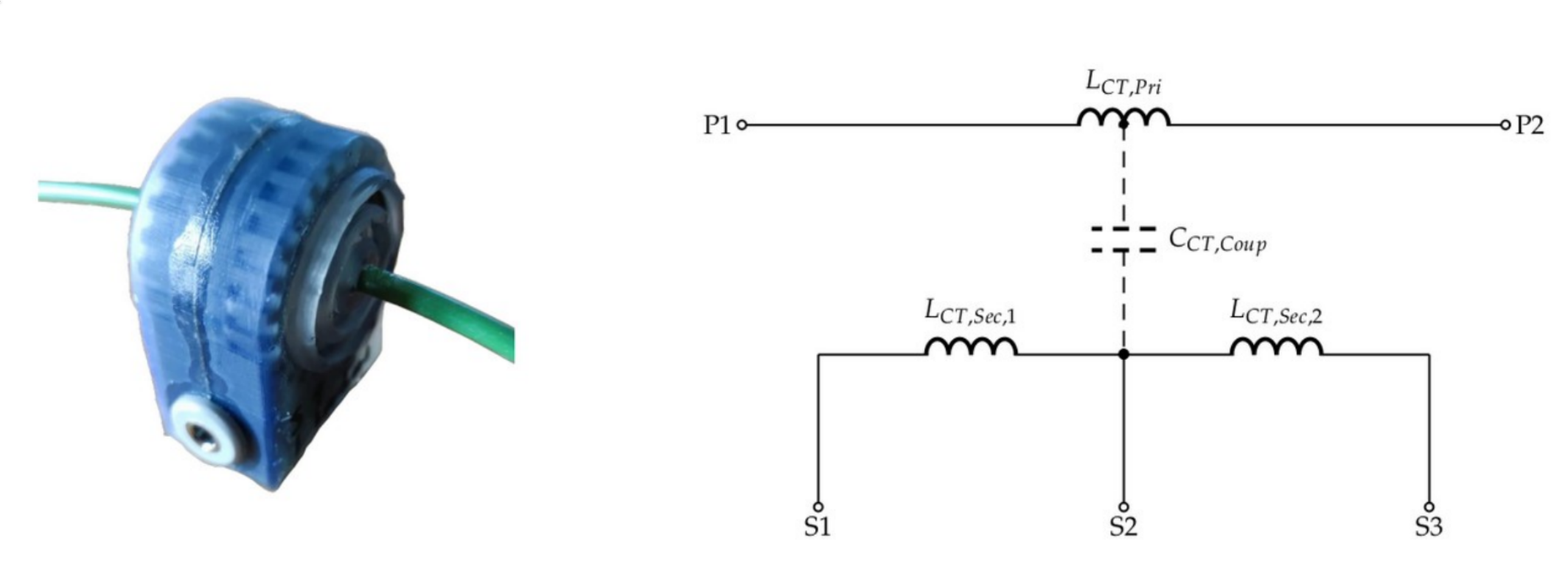
Current transformer as power sensor for cold atmospheric plasmas
This compact and cost-effective technology facilitates a real-time, simultaneous measurement of plasma voltage and plasma current with a combined device in the high-voltage circuit of a cold atmospheric plasma. The system exhibits a good time resolution and enables a live plasma self-regulation.
Challenge
The simultaneous measurement of plasma voltage and current in pulsed, cold atmospheric pressure plasmas is complex and often associated with errors. Furthermore, relatively expensive equipment consisting of oscilloscope, high voltage probe and clampable current probe is currently required. Due to their complexity, the combination of these measuring devices harbors further sources of error, especially since it is not possible to measure current and voltage on the high-voltage side of the plasma simultaneously, due to the relatively poor time resolution. Currently, for commercial applications, the generated plasma is appropriately characterized, sized and adjusted for the particular application prior to use. The variation or control of plasma power during plasma device operation can be limited, since the live and accurate measurement of electrical parameters is challenging.
Our solution
For cold atmospheric pressure plasmas, a current transform (CT) sensor has been developed by scientists from the University of Applied Sciences and Arts - Hildesheim/Holzminden/Göttingen. According to the invention, the system simultaneously measures current and voltage in the high voltage circuit. In doing so, the sensor functions as a "clamp-on" solution by being clamped around a cable, allowing it to non-invasively determine currents and voltages flowing through the cable. This approach also significantly simplifies installation. The sensor is compact, cost-effective and capable of measuring current and voltage simultaneously or with very short resolution times on the high-voltage side. The secondary-side measurement is more challenging, but also much more precise than the measurement on the primary side of the plasma. Therefore, some electrical effects can even be observed only on the high voltage side and after the transformer. In addition, power losses from the transformer are not measured as well. By using it to measure the discharge power of a plasma, cost-intensive components, such as the usually used high-voltage probe, clampable current probe and oscilloscope for the measurement, can be replaced and thus saved. Furthermore, the device stands out from competing methods due to its compactness and the combination of several previously required devices in one system. As a result, the system has an enhanced time resolution, is less complex, reliable and therefore less prone to errors. Furthermore, the system is less expensive than the competition of multiple individual devices used to date. In addition, the time resolution is adjustable due to the discrete electronic elements used and can therefore be planned in advance. In this way, custom-built CTs could be designed for particularly challenging applications at relatively low cost.
 Current transformer with simplified electrical schematic (source: University of Applied Sciences and Art – Hildesheim/Holzminden/Göttingen)
Current transformer with simplified electrical schematic (source: University of Applied Sciences and Art – Hildesheim/Holzminden/Göttingen)
Advantages
- Non-invasive clamp-on sensor for easy installation
- Compact, cost-effective and capable of measuring current and voltage simultaneously on high-voltage side of the cold atmospheric plasma
- Saves user money compared to the usually needed setup (high-voltage probe, clampable current probe and oscilloscope)
- Combination of devices into one system
- Enhanced time resolution, which can be easily tuned to the corresponding electronic demands
Applications
- Current transformer as power sensor for cold atmospheric plasmas to measure plasma voltage and current simultaneously
- Automated and intelligent plasma generators
- Self-regulating plasma systems
Development status
Technology has been successfully developed. Functionality and proof of concept shown.
Patent status
European patent application: EP4312032A1
US patent application: US2024038512A1
Patent applicant: University of Applied Sciences and Art – Hildesheim/Holzminden/Göttingen
Contact
Dr. Mirza Mačković
Patent Manager Technology
E-Mail: Diese E-Mail-Adresse ist vor Spambots geschützt! Zur Anzeige muss JavaScript eingeschaltet sein!
Tel.: +49 (0) 551 30724 153
Reference: MM-2387-HAWK
